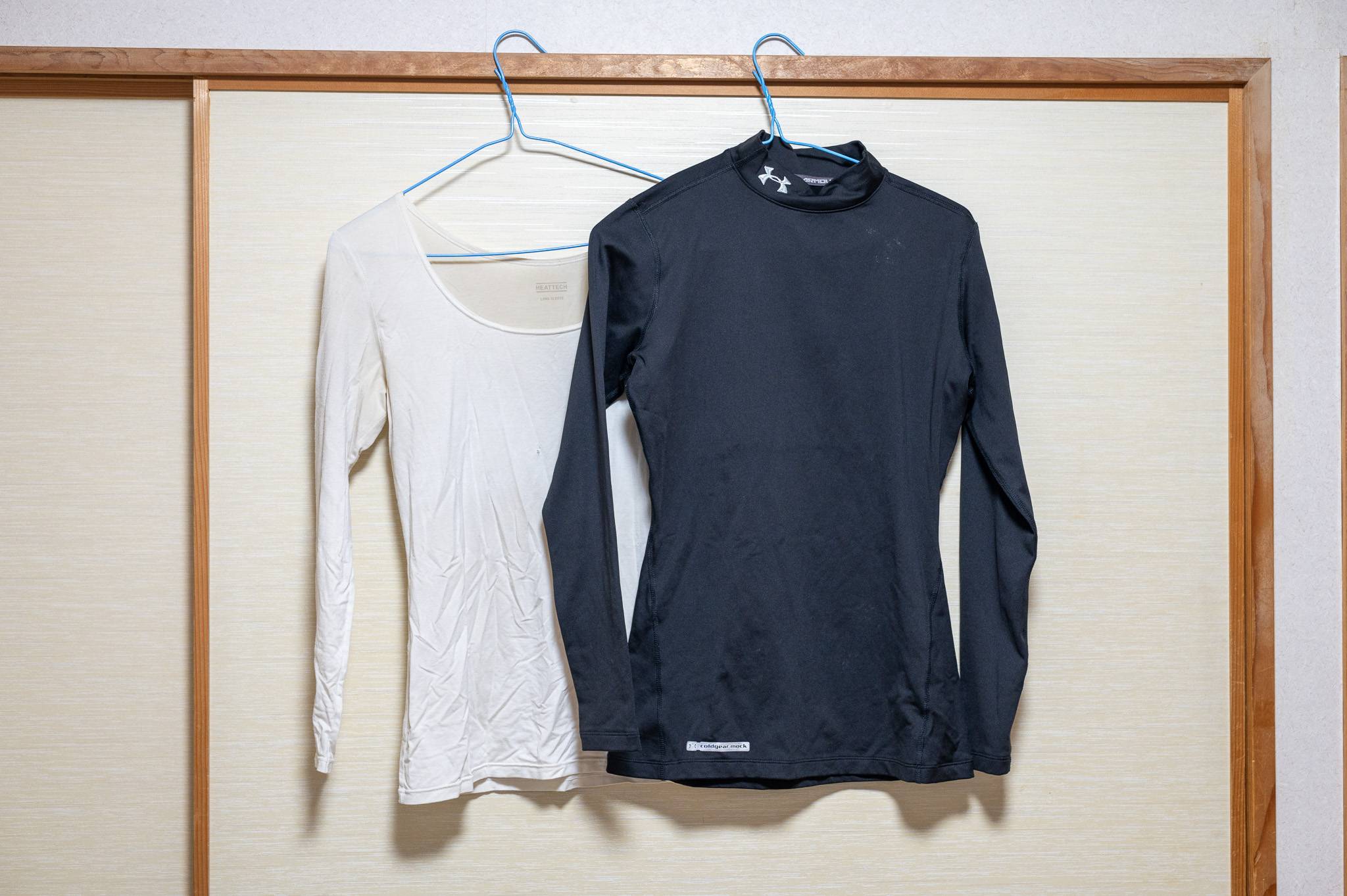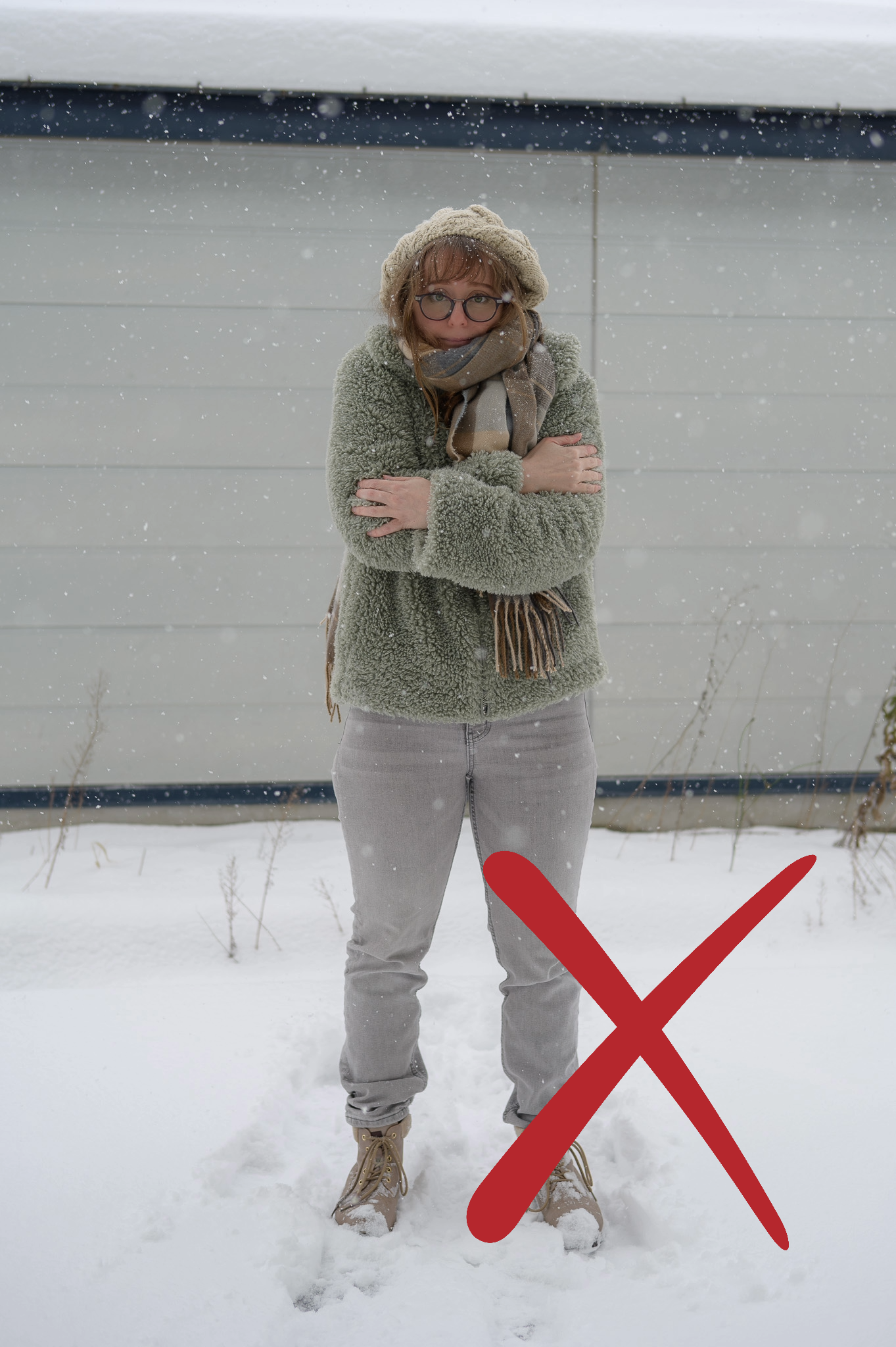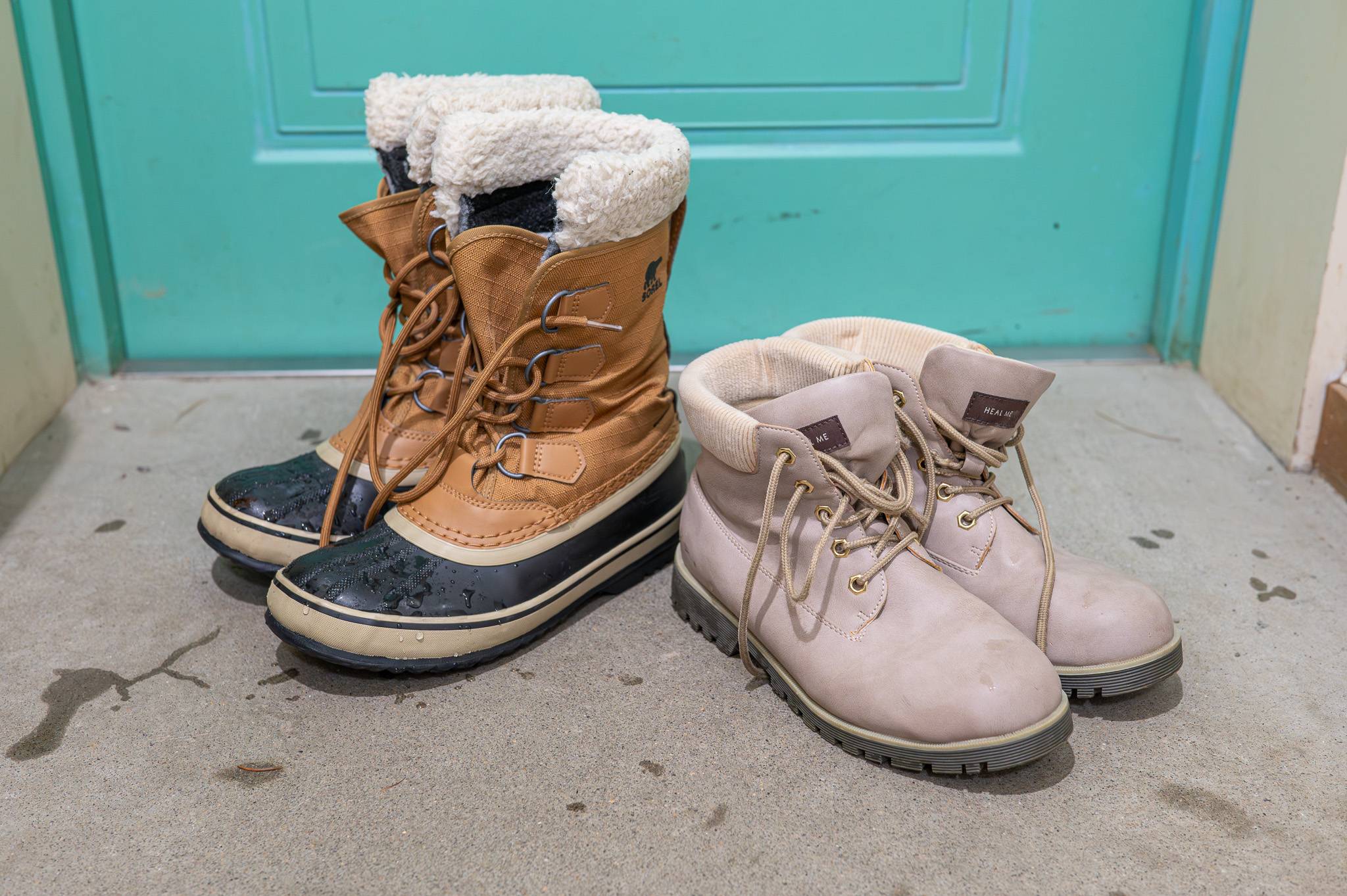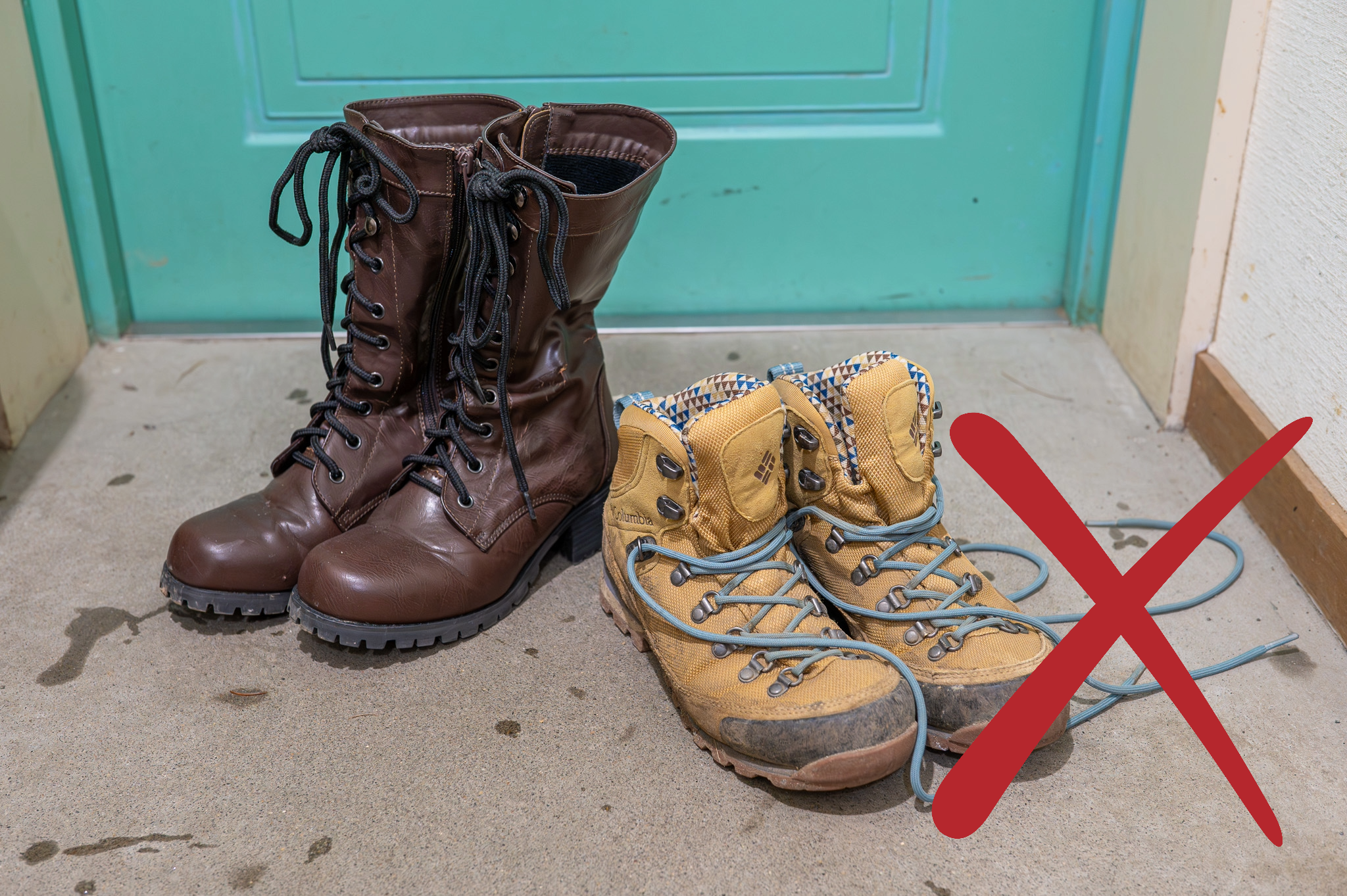Have you ever experienced temperatures so cold that they literally took your breath away? I have, the first year I moved to Hokkaido… It was a midwinter morning and the temperature was -27°C. I left the house, took a breath, and felt all the rest of the air leave my lungs in shock!
Layer Up! How to Dress for Hokkaido’s Winter
Travel Tips
By Hattie

What a good thing that I was wearing all the correct winter layers… If that is what your first breath in the cold can do, just think about the damage that prolonged exposure can wreak on your precious internal organs! Temperatures may sink below -20°C at their lowest in cities, but at altitude they can sink as low as -40°C. When you factor in wind chill, it can make you feel even colder still.
You need a lot of layers between your body and this sheer cold to stay safe and healthy. Complicating things is the fact that as you move and enjoy your outdoor activities, you will warm up quickly– meaning these layers that protect you from the cold could make you overheat instead! So, some layers also need to be removable and made from the right materials.
For people from warmer climes, knowing what to pack to deal with these kinds of temperatures can be daunting. We touched on this in our blog about what to pack for Hokkaido, but today I’d like to go through the winter list in some greater detail, with my handy guide on how to dress for Hokkaido’s winter!
Layer 1: Base Layer
These are your thermals that go on under all of your clothes and over your underwear. They are the most important layer of all! Being close to your skin, they will trap your body heat in and help to keep your core temperature consistent.
They should be made of a quick-dry, breathable material so that they don’t hold your sweat (as too much sweat clinging to your clothes will put you in danger of hypothermia in the cold). I recommend merino wool, or a synthetic material designed to be used as a thermal layer. What you absolutely do not want are cotton or cotton-blend materials. Cotton soaks up sweat and other moisture but doesn’t let it evaporate too easily, so it will not keep you warm if they become wet (which they will– you will get pretty sweaty under these layers, even if you don’t realise it)!

A thermal layer on your top half that properly protects your chest and abdomen and all the squishy, water-filled organs within is absolutely essential. Without one, the cold will start to make you feel unwell incredibly fast. If you feel the cold easily, I highly recommend thermals on your bottom half as well. Thermal tights or long johns are always a good shout!
With that being said, if like me you are prone to overheating, you might find that you can get away without thermals on your bottom half. All the same, I do recommend investing in thermal underwear at least. Snowshoeing is a lot less fun with a freezing cold bottom!
Something else you ought to consider as part of your base layer are thermal socks. Your feet will be in contact with Hokkaido’s compacted and frozen ground for most of the day and the cold will travel through your feet faster than any other part of your body. Cold, numb toes are a horrible sensation so make sure you have prepared several pairs of thick, thermal socks made again from either merino wool or a synthetic material.
I should say that you do not need to go out and spend lots of money on the best gear, either! In fact, the very warmest thermals that I own were bought at a budget supermarket in the UK and cost me just £5 for a set of three! What you should focus on is the material the thermals are made of, as well as the minimum temperature that they can guard you against. Price or brand is not necessarily an indication of quality when it comes to keeping warm in Hokkaido.
Layer 2: Middle Layer(s)
This tends to be the layer that most people either get wrong or skip out on because in truth, it’s two layers in one. Don’t skimp on this layer! Trust me when I say a doubled-up middle layer is extremely important.
But, why two middle layers? Well, it’s because it’s better to start off prepared for the cold with something to strip off if you start to get hot. A second middle layer allows you to do just that. Trust me when I say that you will, almost certainly, start to heat up pretty quickly once you start moving around outside, especially if it’s a very sunny day, so having a removable layer can help to guard you against overheating while exercising. You’ll also feel very hot when you walk into a super-heated cafe or restaurant in Hokkaido, where the heaters or fireplace are often on full blast. However, when you step back out of the warmth, you’ll feel the opposite– so you’ll be glad of an extra layer to put back on!
For your middle layer, you will need two warm, insulating materials.
For your first layer (the one you’ll keep on), fleece tops, either natural or synthetic, are my recommendation. As a material that is very good at trapping heat, they will work well with your thermals and keep you feeling snuggly and warm. If not fleece, any kind of heat-trapping, synthetic material is recommended. Merino wool is again a great option.
TIP: My mid-layer 1.0 of choice is always a comfortable fleece top!

Your second, removable middle layer ought also to be made of fleece, or, alternatively, a down-padded, lightweight thermal jacket. Either synthetic or real down is perfectly fine in this case.
TIP: My second mid-layer of choice is almost always this synthetic jersey zip-up, which is brushed on the reverse to help keep the heat in. It even has little hooks for my thumbs that help to keep my hands warm!


I wouldn’t recommend knitted jumpers or other bulky materials as your removable middle layer as they can be bulky, sweat-holding depending on the material and hard to squash into a backpack! For example, I love this warm jumper, but it’s completely impractical for an adventure tour and takes up far too much space in my luggage!
Once again, you don’t have to be a fashionista to keep warm. Invest in something that’s right for the job rather than limiting yourself to the high price tag and small range of a ritzy brand.

I see many tourists in Hokkaido wearing ensembles like this, looking very chilly in their jeans and non-waterproof coats. Don’t turn up to your Adventure Hokkaido tour dressed like this!
Layer 3: Outer Layer
Ideally, your winter coat should be padded with some kind of warm material. Many winter coats are made with real down padding and while this is fine for city life in subzero weather, it is not ideal if you are doing outdoor activities. When snow melts, it can find its way inside coats via the seams and natural down loses its volume when wet, rendering it useless for insulating you. On the other hand, synthetic versions of down are engineered to stay puffy even when wet.
However, a common mistake that many make is to use these large, bulky jackets for activities like snowshoeing. While large, insulated jackets are good for sedentary activities, like nature cruises, they might make you feel too hot if you are moving around too much.

If you sweat too much under your thick layer, you will start to feel cold (and you of course cannot take it off) so it may be best to also prepare a lighter, wind-proof and waterproof outer layer. A shell jacket is a good idea. They will help to repel snow and keep you protected against Hokkaido’s fierce wind chill!
TIP: This is the perfect winter coat for activities where you aren’t moving much, like watching Red-crowned Cranes on a -20°C morning! But it’s much too heavy and stuffy for snowshoeing.
On your bottom half, you’ll need to wear insulated, windproof and waterproof trousers. Ski pants or ski salopettes are a great place to start. A common error made by visitors to Hokkaido is wearing thick, heavy jeans, mis-judging that the weight of the material alone will keep their legs warm. Do not do this! Being made of natural materials, jeans soak up melted snow and liquid like a sponge. They are also a material designed to keep you cool in summer, not warm in winter. The tight cut of jeans often does not help so even if you somehow manage to avoid melted snow freezing to them, you’ll simply end up with cold material just clinging to your legs… not nice!
...And everything else!
And finally, on top of all of this are the little things that make a big difference… hats, gloves and neck warmers! Waterproof, warm gloves like ski gloves are your best bet as they won’t get wet in the snow and will keep your fingers nice and warm.

For a hat, choose something woolly and warm that won’t get pulled away by Hokkaido’s strong winter winds. A beanie is a good place to start! If you’re joining us for a winter tour or planning on doing any outdoor activities in Hokkaido, face and neck warmers are better than long scarves, which tend to flap about in your way and get tangled up in all your other layers.
A complete example of what to wear for a winter activity
Hat - Wooly cap to keep my head warm and snow out of my face.
Neck warmer - You might not be able to see it, but you will feel it.
Coat - Lightweight, waterproof and windproof. It has just enough insulation to keep me nice and snug, without boiling me when I start moving.
Bottoms - Waterproof ski pants.
Footwear - Waterproof, high-cut snow boots. More on these next.

Footwear
So now that you’re all layered up, only one question remains… what should you put on your feet? Well, first and foremost, Hokkaido’s winter roads and pavements are extremely icy and slippery underfoot, which means that, above all, there are a number of shoes that you should avoid when packing for Hokkaido.
Trainers are something I often see on the feet of tourists here– but they never last long! Snow comes in over the top and they quickly become waterlogged and freezing cold. Additionally, they don’t provide any friction on icy surfaces and so are responsible for a lot of slip-and-fall accidents. It should also go without saying, but don’t bring any heels with you– even for a nice night out at the end of the day. They are the least-suitable shoes for Hokkaido’s winter!

What you will need for doing outdoors activities during the day are waterproof, high-cut snow boots. The height and material will stop snow from sliding inside your shoes and soaking your thermal socks. You must also make sure that the soles of your boots have proper friction grips designed to deal with snow and ice. Many who don’t have snow boots often opt for hiking boots instead, but I wouldn’t recommend this– hiking boots are generally an ankle-cut, which means snow will get in over the top, plus they are designed to be worn at warmer times of the year. These two factors combined will mean your feet can quickly get chilly if you go down this route!
Large snow boots can start to feel quite heavy and uncomfortable by the end of the day, so if you wish, a smaller, lighter pair of ankle-cut snow boots are a good addition to your suitcase. These will be useful for when you are up to more casual activities, such as going out for a meal or exploring urban streets.

For both your high and low cut snow boots, avoid boots made of soft materials, like leather or suede. Neither is completely waterproof and both can be damaged by snowshoe grips, as well as salt or minerals in the gravel used to grit Hokkaido’s winter roads. Avoid fashion boots, too– even if they are of a material that can handle the elements, they might not provide adequate friction on the ice.
Finally, some visitors to Hokkaido opt for spikes on the bottom of regular winter fashion boots or hiking boots. We don’t recommend this in Hokkaido as many indoor facilities will ask you to remove spikes before entering to protect their flooring. This can be a bit of a hassle over several weeks, so it’s better to wear shoes with grips already designed into the soft soles.

Bundled Up and Ready to Go!
So, there you have it! As you can see, staying warm in Hokkaido’s winter is not that hard, thanks to all your warm layers. The key is to stay dry (both from sweat and snow) and to put some distance between yourself and the cold air in the form of puffy insulation.
Now that you’re an expert on how to layer up for Hokkaido’s winter, all that’s left to do is to come and experience it for yourself! Despite the cold, it is easily one of Hokkaido’s most beautiful seasons. And if you are dressed for it, you can experience its beauty to the full.
If it’s your first time visiting Hokkaido in the winter, consider joining one of our winter departures to get the most out of this amazing season. With our knowledgeable guides at your side, you’ll navigate your way through the snow to some amazing views and memorable destinations. If that sounds like the way you want to explore Hokkaido’s winter, get in touch with us and we’d love to help!
Well, I’m off to layer up and frolic about in this snow. (Santa brows and hair are optional, of course). See you out there!
Ready to brave the cold?
Join us for a winter adventure in Hokkaido